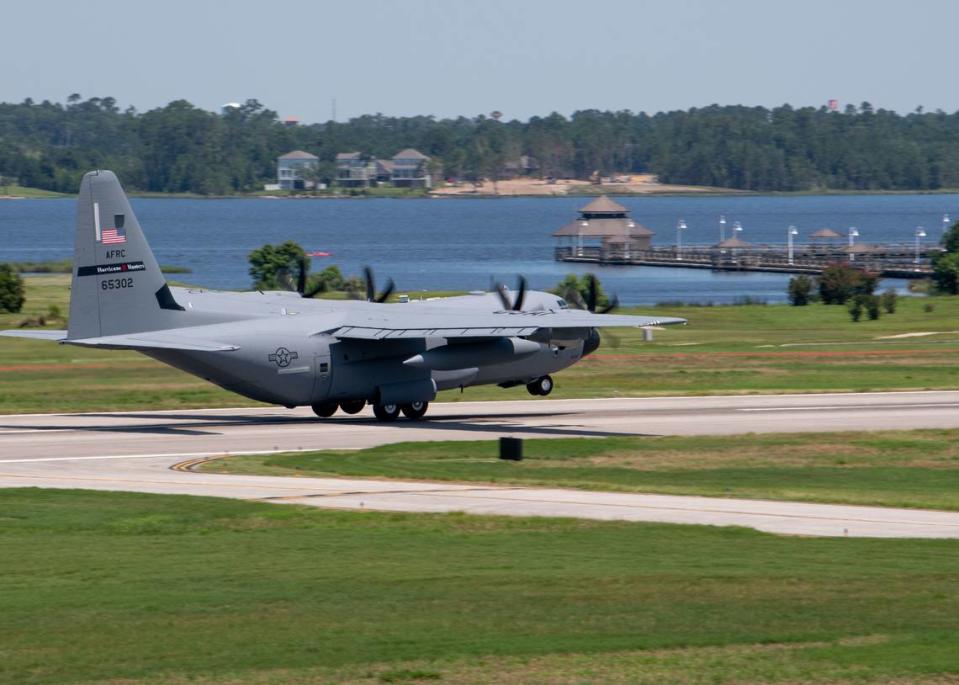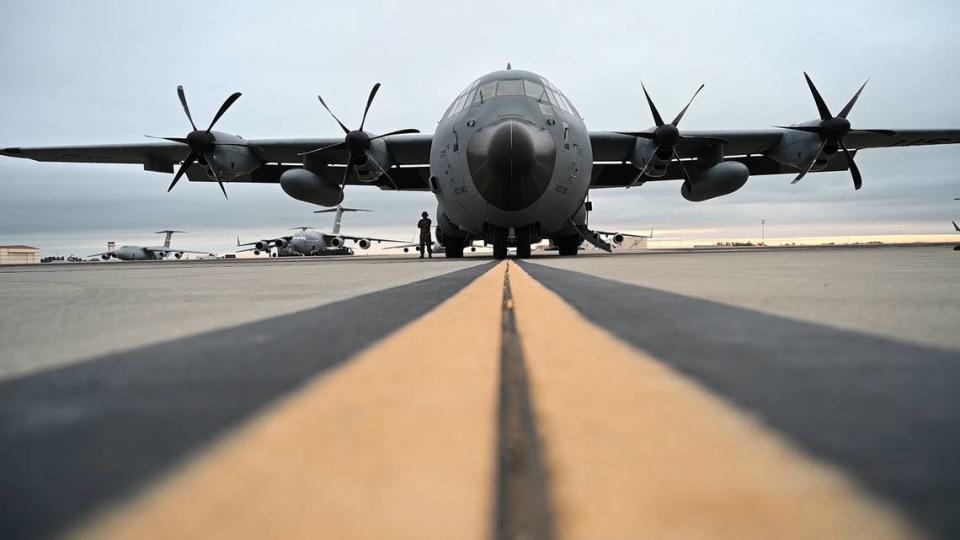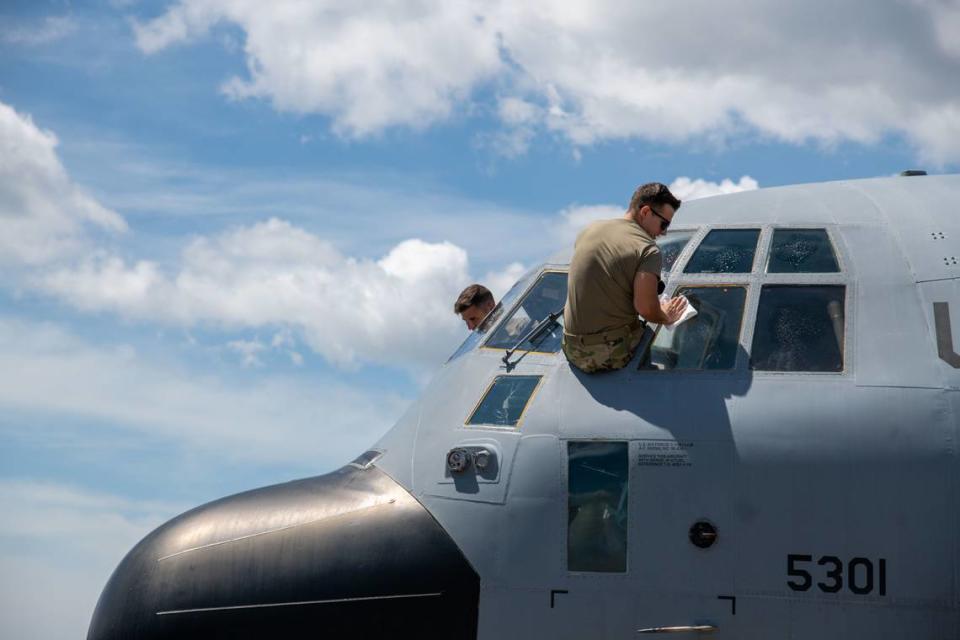Hurricane Hunters hunting for money as oceans heat up, demands for data prove ‘insatiable’
The Biloxi-based Hurricane Hunters are spread thin.
Officially known as the 53rd Weather Reconnaissance Squadron and headquartered at Keesler Air Force Base, the Hurricane Hunters have an illustrious history dating to 1943, when an Army Airs Corps major flew through a hurricane on a barroom dare. He went up a second time with a weather officer in what is considered the first attempt to collect airborne weather data for plotting a hurricane’s path.
The Weather Reconnaissance Squadron was officially activated in 1944 as the 3rd WRS and has been active under different designations and locations since that time, arriving at Keesler in 1973. The squadron has had the same number of WC-130J airplanes, and crews to staff them, since Congress first dedicated those resources in 1996.
As oceans heat up and technology advances, the Hurricane Hunters’ services are more in demand than ever and more resources are needed for the mission, Air Force personnel say.
The mission is important for coastal residents because the data that Hurricane Hunters collect improves the accuracy of the National Hurricane Center’s forecasts for the strength, path and timing of storms, saving lives and property.
Hurricane Hunters are the world’s only operational unit that routinely flies weather reconnaissance missions. said Maj. Chris Dyke, an aerial reconnaissance weather officer of the 53rd WRS.
Their mission has expanded from six months to 10, with winter weather monitoring added to the mix, Dyke said. The meteorologist has been flying into storms as a Hurricane Hunter for 16 years.
“Generally speaking,” Dyke said. “I think what we’ll find is that there’s more demand than we have resources to support.”

Staging equipment for hurricane season
Dyke was in Washington recently to help explain the mission’s demands to Congress as the Air Force, working with the National Oceangraphic and Atmospheric Administration, completes a report on the resources Hurricane Hunters need through 2035. He could not discuss specifics of the request because the draft report must be finalized, but Congress is expected to consider a funding increase for the weather operations.
Dyke said more resources will help hurricane forecasters avoid tough choices.
In 2023, the Hurricane Hunters were working two storms. Short on resources, Hurricane Hunters had to tell NHC to decide which storm to track. In the end, they collected data for what became Hurricane Idalia, which made landfall along Florida’s Big Bend in August.
“It is starting to happen more often now as the resources we have are starting to show their age,” Dyke said.
Hurricane Hunters have already started staging equipment in St. Croix for the start of hurricane season on June 1. They’ll be working storms through the end of the season Nov. 30, and beyond, if needed.

Hurricane Hunters on a mission
Hurricane activity ebbs and flows but a busy season is forecast for 2024. A crew of hundreds is needed to keep Hurricane Hunters in the air. They can expect few, if any, weekends off after July. By that time, “you’re chasing something somewhere,” said Col. Will D. Magee, commander of the 403rd Wing Maintenance Group.
The weather mission, he said, includes 278 full- and part-time mechanics. For every hour one of the planes spends in the air, he said, 20 hours of maintenance is needed. The airplanes are subjected to winds of 150 mph or more, and can be pelted by rain, hail or both. He said the propeller and nose of a plane take the worst beating.
“The average layperson doesn’t know how much work it takes to keep this fleet in the air,” he said. The planes fly muliple “X” patterns through a hurricane, with each leg being 110 miles. The pilots use an “X” pattern to find the exact center of a hurricane.
Five crew members are on each flight: a pilot, co-pilot and navigator up front, and a weather reconnaissance officer and loadmaster to help with data collection in the cargo area.
While he knows that he can pretty much forget weekend and holiday planning from July to November, Magee said: “We love it. We’re all proud of this mission.”
Hurricane Hunters work hand-in-hand with NOAA’s National Hurricane Center, which has three planes that collect weather data for research.
The Hurricane Hunters traditionally operated in the Gulf and Atlantic but work in the winter on atmospheric rivers now takes them to the Pacific Coast, too.
“Our mission is growing at a great clip,” Magee said. “There’s an insatiable appetite for weather reconnaissance. They’ve been getting better at using data, so they want more data. We’re the platform that provides that data and we’re happy to do it.”


